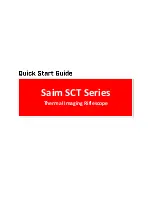
Niemals mit dem Teleskop in oder in die Nähe der Sonne blicken:
E
rblindungsgEfahr
!
5
COMPONENTS
Introductory words about this telescope and
its use
This telescope from BRESSER is a versatile and high-resolution optical
instrument. It shows nature in even greater, detailed detail. First and fore-
most, it is designed to study the starry night sky. For example, it can be
used to view Saturn with its distinctive rings at a distance of 1.3 billion
kilometres. But also other planets or the moon, nebulae, star clusters and
even far away galaxies beyond the borders of our solar system can be
seen with this so called "stargazer". Maksutov-Cassegrain telescope.
The handling of the special mirror optics as well as the equatorial profes-
sional mount require a little training time in advance, in order to exhaust all
the possibilities of the telescope. We therefore recommend that you study
the operating instructions and the accompanying literature carefully. It's
worth it! With the included accessories, however, simple observations can
already be made once the first steps have been correctly set up and car-
ried out.
Description of the components according to Figure 1a
to 1d
1 Ocular clamp screws: Fix the eyepiece in to the plug-in sleeve (also
point 3). A sensitive tightening of the clamping screw is sufficient.
2 Eyepiece holder: Accepts the eyepiece or a zenith mirror (see 2a).
2a Diagonal mirror 90° mirror system in front of the eyepiece, which allows
a more comfortable observation position. Insert the zenith mirror directly
into the eyepiece holder, as well as the eyepiece and now tighten the
knurled screws. (see Chap. "Structure", pt. 13).
3 Eyepiece: Insert the supplied eyepiece into the holder provided or the
zenith mirror (see point 2/2a) and fix it in place with the knurled screws.
The eyepiece magnifies the image captured by the telescope.
4 LED viewfinder: Projects a red dot on to a mirrored surface, which helps
to align the observation object with the image centre of the telescope
eyepiece.
5 Battery compartment of the LED viewfinder: Contains a button cell bat-
tery (CR2032) which supplies power to the LED viewfinder (red dot).
6 On/off rotary switch: Turn the rotary switch to turn the LED viewfinder
on or off.
TIP: After your observation session, turn off the LED viewfinder. This saves
the batteries!
7 Viewfinder shoe/base: Holds the LED viewfinder in place.
8 Focus knob: It causes a fine movement of the focusing drive and ena-
bles the precise focusing of an object. The telescope can be focused in
a range from about 150m to infinity. Rotate the focus knob to focus on
objects.
9 Dust cover: Prevents dust and coarse dirt from penetrating optical sur-
faces or the tube and maintains the optical quality of the instrument.
NOTE: The dust cover should be replaced after each observation.
However, first make sure that all the dew that has accumulated during
observation has completely evaporated before replacing the dust cover.
10 Optical Tube: The most important optical component. The tube con-
tains the main optics and thus collects the light from distant objects
and brings it together to form a focal point so that it can be observed
through the eyepiece.
11 OTA prism rail: To be attached to the mount (see chap. "Structure",
pt.7).
13 N/A
14 Viewfinder prism rail: Attaches to the viewfinder shoe (see Chap.
"Structure", pt. 9).
B
For information on selecting
the correct eyepiece, see the
chapter
"Using accessories".
H
For information on moun-
ting the viewfinder, see the
"Assembly"
section (items 9
and 9a).
For information on aligning the
viewfinder, see the chapter
"Aligning the Viewfinder"
section.
1
Information on the assembly
of the tube and the associa-
ted components in the chapter
"Assembly" (from point 7)
Summary of Contents for First Light MAK
Page 1: ...Instruction manual First Light MAK 100 1400 EQ Maksutov telescope Art No 9621802...
Page 18: ...NOTES...
Page 19: ...NOTES...





























